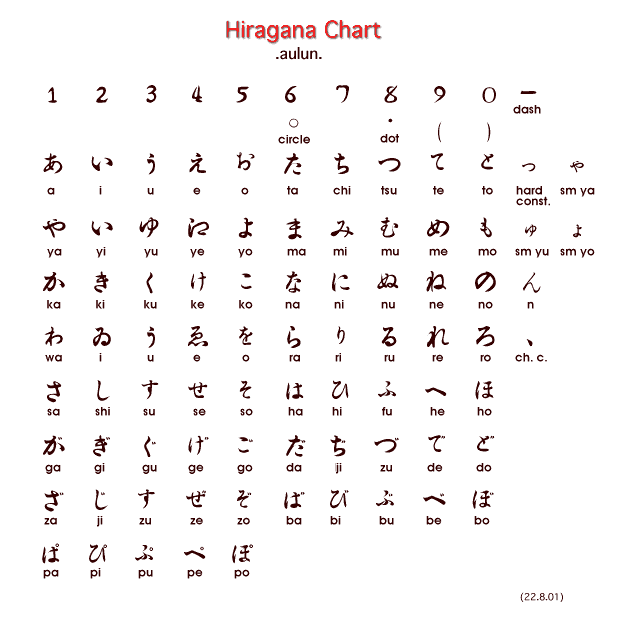


To
me, this is just a nice and interesting experimental play - and kind of contradiction
to the unambiguous nature of Lojban, the logical language.
Writing
Lojban in Hiragana is a challenge, and...
giving pretty good-looking results when writing
Haiku-style poetry
in Lojban language.

The Japanese Syllabic Chart:
 |
Some main rules for transcribing Lojban:
|
Syllables with finals -u or -i (in Japanese often pron. as a "whisper" vowel) are used also for consonants, e.g. ge-ru-ku
> gerku (dog) - whereas (a fancy word like) greku
would be gu-re-ku But, since there exists consonant "n", one has two ways to go: gu-nu-ka > {gunka} (work) or just gu-n-ka
According to Japanese phonetics, there are some specialties: t-row:
ta
-
chi (not:
ti)
-
tsu (not tu) - te - to So we have to build: chi-a
> tsha > tca; e.g. lojban: {tcadu} (city); chi-u
> tshu > tcu etc. But we still need some more: zu-shi-a >
ja; lojban: {janbe} (bell); zu-shi-u > ju etc.
'Double vowels' (i.e. semi-vowel plus vowel) and diphtongs should be given by writing each single character, e.g.
e-i for {.ei}, u-u for {.uu} (not: wu - see above),
cmene (names) should be written with a Japanese period (=circle) following the final consonant (i.e. the syllable having consonant value) or the final (open) syllable, indicating that there has to be added a virtual consonant final: e.g.
fu-ro-i-du. > {froid.} > Freud
Japanese language does not differentiate between these two consonants nor does Hiragana . Lojban, on the other hand, has both 'R' and 'L'. So it would be advisable to create an L-row (e.g. by adding nigori - i.e. " - to the R-row characters - see above).
The
"schwa" (lb: -y) is indicated by the Japanese (top-down)
comma (see above)
The H-sound unique to Lojban (and only allowed between vowels) could easily be transcribed by using characters of the H-row: e.g.
ma-ha > {ma'a} (we = me and you and others); but: di-hu/dji-fu > {di'u}/{djifu} ??? This points to a problem still unsolved! Or leave it ambiguous as it is - and kind of a riddle for machine translation :-) Any suggestions? |
 |
You are reader nr.
since September 2001
(Homepage) | (Other poems in different languages) | (My Poems)